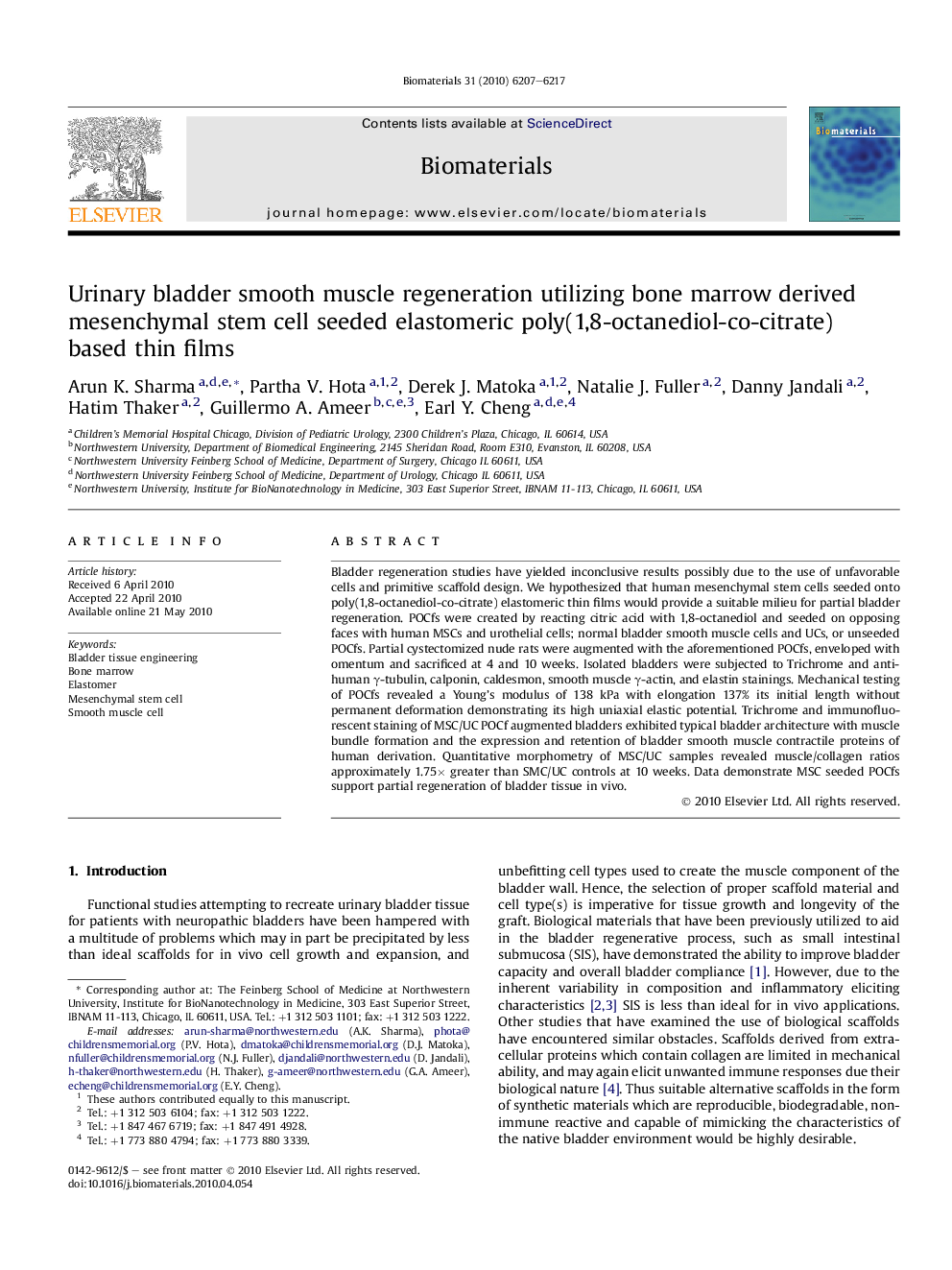| Article ID | Journal | Published Year | Pages | File Type |
|---|---|---|---|---|
| 9285 | Biomaterials | 2010 | 11 Pages |
Bladder regeneration studies have yielded inconclusive results possibly due to the use of unfavorable cells and primitive scaffold design. We hypothesized that human mesenchymal stem cells seeded onto poly(1,8-octanediol-co-citrate) elastomeric thin films would provide a suitable milieu for partial bladder regeneration. POCfs were created by reacting citric acid with 1,8-octanediol and seeded on opposing faces with human MSCs and urothelial cells; normal bladder smooth muscle cells and UCs, or unseeded POCfs. Partial cystectomized nude rats were augmented with the aforementioned POCfs, enveloped with omentum and sacrificed at 4 and 10 weeks. Isolated bladders were subjected to Trichrome and anti-human γ-tubulin, calponin, caldesmon, smooth muscle γ-actin, and elastin stainings. Mechanical testing of POCfs revealed a Young’s modulus of 138 kPa with elongation 137% its initial length without permanent deformation demonstrating its high uniaxial elastic potential. Trichrome and immunofluorescent staining of MSC/UC POCf augmented bladders exhibited typical bladder architecture with muscle bundle formation and the expression and retention of bladder smooth muscle contractile proteins of human derivation. Quantitative morphometry of MSC/UC samples revealed muscle/collagen ratios approximately 1.75× greater than SMC/UC controls at 10 weeks. Data demonstrate MSC seeded POCfs support partial regeneration of bladder tissue in vivo.
